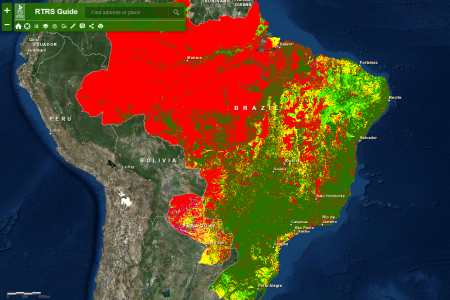- Chloroplast heterogeneity and historical admixture within the genus Malus. Three genetic networks within the genus, with the cultivated species in one of them.
- Subgenomic Diversity Patterns Caused by Directional Selection in Bread Wheat Gene Pools. Five subpopulations, dividing the European from the Chinese material. Some parts of the genome more in need of diversity than others.
- Biodiversity of Lactuca aculeata germplasm assessed by SSR and AFLP markers, and resistance variation to Bremia lactucae. Some race-specific resistance in the wild relative in Israel-Jordan, but nothing extraordinarily efficient.
- Using Multi-Objective Artificial Immune Systems to Find Core Collections Based on Molecular Markers. Very fancy math not only picks populations to maximise diversity, but also potentially at the same time minimises distance from the office.
- Assessment of ISSR based molecular genetic diversity of Hassawi rice in Saudi Arabia. It’s not just one thing.
- Minor Millets as a Central Element for Sustainably Enhanced Incomes, Empowerment, and Nutrition in Rural India. Holistic mainstreaming pays dividends.
- Minimum required number of specimen records to develop accurate species distribution models. Depends on prevalance, but 15 is a good rule of thumb.
- Microsatellite Analysis of Museum Specimens Reveals Historical Differences in Genetic Diversity between Declining and More Stable Bombus Species. Species which declined less diverse than species which did not.
Brainfood: Vavilov then & now & always, Helmeted fowl diversity, MLND resistance, Sorghum diversity, Facilitation, Rice yields, Biodiversity services, Wild tomato diversity, Date diversity
- In the Footsteps of Vavilov: Plant Diversity Then and Now. The Pamiri Highlands of Tajikistan, the Ethiopian Highlands, and the Colorado Plateau of Southwestern North America compared at time of Vavilov and now: “Localities that have retained diversity have suffered the least.”
- Vavilovian Centers of Plant Diversity: Implications and Impacts. “His concept of specific centers of origin for crop plants was not an isolated aphorism but has directed breeders, on their study and reflection, to the continued improvement and economic development of plants for humanity.”
- Mitochondrial DNA variation of Nigerian domestic helmeted guinea fowl. Recent domestication, and lots of intermixing mean not much diversity, and what there is doesn’t have structure.
- Genome-wide association and genomic prediction of resistance to maize lethal necrosis disease in tropical maize germplasm. That’s when two viruses attack synergistically. Resistance is from multiple loci with smallish effects, and there are some promising markers.
- Genome-environment associations in sorghum landraces predict adaptive traits. Genotype predicts drought tolerance.
- Facilitation and sustainable agriculture: a mechanistic approach to reconciling crop production and conservation. Understanding facilitative plant–plant interactions (intercropping, varietal mixtures) in crops leads to more sustainable farming practices. Or it could.
- The relative contribution of climate and cultivar renewal to shaping rice yields in China since 1981. Mainly new varieties. Climate change has actually helped, but for how long?
- Biodiversity inhibits parasites: Broad evidence for the dilution effect. Meta-analysis shows biodiversity decreases parasitism and herbivory.
- Using genomic repeats for phylogenomics: a case study in wild tomatoes (Solanum section Lycopersicon: Solanaceae). Data that are usually thrown away turn out to be useful for something after all.
- Genetic structure of the date palm (Phoenix dactylifera) in the Old World reveals a strong differentiation between eastern and western populations. Asian and African genepools, with geneflow E to W.
Mapping responsible soy irresponsibly
Good thinking by the Round Table on Responsible Soy (RTRS) to map where it is most — and least — environmentally responsible to extend soy cultivation in South America.

“An interesting exercise, isn’t it?” they ask. No doubt it was meant rhetorically, but I’ll answer anyway: definitely, you bet! But how much more interesting if there had been a way of adding your own data to theirs. I’d really like to know, for example, about any crop wild relatives found in those light green areas in particular: “Areas where existing legislation is adequate to control responsible expansion (usually areas with importance for agriculture and lower conservation importance).” I know where to get the CWR data. 1 But how do I mash them up with this?
Nibbles: Sustainable database, Strawberry breeding, Breeding rice, Nutrition champion, Camel milk, Mike Jackson, Feed the Future, Quinoa prices, Small is beautiful
- A database of how you do sustainable intensification.
- Building a better strawberry.
- New lab helps Bangladesh with high-zinc rice.
- Maybe those guys are you nutrition champions.
- They’re right, camel milk is good, and good for you.
- Useful list of Mike Jackson’s publications.
- Pres. Obama learns about maize in Ethiopia.
- Increased quinoa supply leads to lower prices shock.
- Silly season roundup: tiny watermelons (no, not really), tiny pineapples.
“Tomatillos silvestres, tomatillos silvestres!”
A short Smithsonian.com piece by Barry Estabrook does a really outstanding job of describing — no, explaining — the conservation and use of crop wild relatives to a lay audience. It’s all there. The value to crop breeders of genes from wild relatives. The history of germplasm exploration, and how it has resulted in the establishment of large collections. The need for, and urgency of, further collecting. The use of information from genebanks to guide future exploration. The challenges that such work faces, including on the policy side. And the euphoria that it can generate when you do overcome those challenges. All in a couple of pages, using a single wild species as an example. And if, once you finish reading the story, you want to know more about what Estabrook was chasing in Peru, it’s (probably) this.